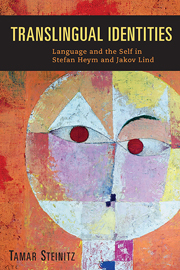Book contents
4 - The Wandering Jew
Published online by Cambridge University Press: 05 October 2013
Summary
Condemned to an eternal life of wandering for an offence against Jesus, the Wandering Jew has featured in European folk tales, visual art, and literary works since the Middle Ages. As Regine Rosenthal maintains, the Christian legend constructs the Jew as the Other, “as an element alien to hegemonic Christian Culture, who is therefore to be shunned and excluded from participation in the discourse of power.” The popular legend developed over centuries, and although the wanderer remained, for the most part, a negative figure, by the nineteenth century this figure was reworked and transformed. References to Jesus “[seem] to be omitted in very many, probably most” mentions of the Wandering Jew in the nineteenth century, and in works of romantic writers, Rosenthal notes, the Jew is assigned “qualities ranging from the Romantic rebel, grand sufferer, Byronic hero, mysterious stranger, to conceited blasphemer, Gothic villain, eternal skeptic, and ceaseless instigator of change” (135). Although the legend, with its emphasis on the Jew's culpability, is virtually nonexistent in Jewish oral tradition, the Wandering Jew does feature in the works of Jewish writers as a figure symbolizing the Jewish people exiled from their homeland.
In the twentieth century, as Sidra DeKoven Ezrahi shows in Booking Passage, the “Jewish poetics of exile and return” is revolutionized by “the experience of migration, dislocation and extermination of masses of Jews … and by the reinvention and settlement of the ancient Jewish homeland.” The state of exile no longer defines the Jewish people as it had for nearly two thousand years, as the dream of a return to Zion—traditionally associated in Judaism with a messianic vision of the end of days—becomes a reality. The reconnection with the physical land and the establishment of a political, rather than a spiritual, entity in the form of the State of Israel resulted, to quote Ezrahi, in “an intoxicating—and toxic—encounter with the only place that had the status of the real” (4).
- Type
- Chapter
- Information
- Translingual IdentitiesLanguage and the Self in Stefan Heym and Jakov Lind, pp. 136 - 181Publisher: Boydell & BrewerPrint publication year: 2013



